117 Search Results for: Quaile
Philippines, Warsaw, Arctic – join the dots
I have very mixed feelings as the UN climate conference gets underway in Warsaw just as the Philippines are devastated by what seems to have been the worst storm ever. The experts tell us climate change is extremely likely to be increasing the severity of extreme weather events. It is not hard to see the possibility of a link. And where does the Arctic come in? Well, the only Arctic headlines at the moment would seem to be the ongoing saga of the Greenpeace activists still under arrest in Russia after the protest at the Prirazlomnaya Arctic oil rig. Connection clear?
Amongst the mixed bag of emotions I am currently shuffling are horror at the extent of the storm devastation in the Philippines, intense sympathy with the victims, helplessness in the face of the huge force of typhoon Haiyan. Then comes deep frustration, verging on anger at the failure of the world’s big emitters so far to take action to reduce emissions and avert what the world’s scientists and the UN tell us will be catastrophic climate change, if we don’t keep to the two degree target. Add to this my complete failure to understand the continuing rush to get oil from the Arctic – regardless of the fact that this would, in turn, contribute further to the vicious circle of climate change.
Some 13% of the world’s remaining undiscovered oil reserves, 30% of its gas are estimated to be in the Arctic. The higher the price of energy, the faster the ice melts, the greater the international interest in a region becoming increasingly accessible as the world continues to warm. At the same time concern is growing amongst those who see development as a threat to the sensitive environment of the High North and the lifestyles of indigenous peoples there – and an increasing risk for the global climate: the burning of more fossil fuels would further intensify global change by producing more CO2 emissions. According to the World Energy Outlook 2012, two thirds of our known fossil fuel reserves would have to remain in the earth, if the goal of limiting temperature rise to two degrees Celsius and averting catastrophic climate change is to be reached.
The harsh nature of Russia’s reaction to the Greenpeace protest at the Prirazlomnaya oil rig in the Arctic demonstrates how important the region has become for the government in Moscow. While Greenpeace has stepped up its campaign to stop oil drilling in the Arctic and have the activists and ship released, the business of Arctic exploration and development just “carries on regardless”. Rosneft, Statoil, Italy’s ENI, Exxon Mobil, Shell… are all active in the Arctic. China and India are also keen. The UK recently unveiled plans to become a hub for Arctic oil exploration. Meanwhile, Greenpeace, is campaigning for the area around the North Pole to be declared a sanctuary and protected from drilling or other industrial exploitation. In addition to environmental campaign groups, the “Fossil Free Campaign” initiated by US American Bill Mc Kibben is gaining influence, trying to persuade companies and institutions to withdraw investments from fossil fuel-related enterprises. Perhaps that will be the way to bring about a change of heart?
Returning to the UN climate talks in Warsaw, my mixed bag of emotions unfortunately does not contain a lot of optimism at the moment. Maybe just a sliver of hope that all is not yet lost. But looking at host country Poland’s record as a coal country and recent statements by its political leaders insisting this would remain so, and bearing in mind that the country has consistently blocked the EU from adopting stricter climate goals (which, admittedly, appears to suit many other member states), it is hard to imagine this conference bringing much in the way of progress. While top emitter China is paying more attention to its environment and climate policies, the country’s rejection of international binding targets makes considerable progress unlikely.
It would be wrong to use the typhoon disaster in the Philippines just to attract more attention to the climate conference in Poland. Clearly getting international aid out to the region has to have top priority. But there is surely a moral imperative to act upon the warnings of our scientists that business as usual is extremely likely to increase the severity of storm and flood events, which hurt the needy worst of all? And would that not have to include the realization that burning fossil fuels is helping to melt the Arctic twice as fast as the rest of the planet – with negative effects not only on the people and ecosystems in the region, but – through feedback effects, sea level rise, increasing ocean acidity etc – on the regulation of the world climate? And thus, that investing in renewable energies and the transition to a green economy makes more sense than Arctic oil exploration?
Greenpeace: Pirates, Hooligans – what next?
If it didn’t involve thirty committed conservationists being imprisoned and intimidated, I might be inclined to see the Russian authorities’ behaviour as something of a farce. Russia has now dropped allegations of piracy, but accused the activists of hooliganism, which still carries a long jail sentence. Pirates? Hooligans? What will they come up with next in their effort to keep the crew of the Arctic Sunrise in jail and hammer home the message that Russia takes its Arctic interests very seriously? The absurdity of the charges against protesters on behalf of an organisation famous for its often spectacular but always unarmed and peaceful demonstrations in the cause of environmental protection tells us a lot about Russia’s attitude towards the Arctic. “Russia takes on Greenpeace – and stakes its claim to the Arctic” is the headline of an article by Simon Shuster for Time World , which suggests Greenpeace met with the disproportionately harsh response because the Arctic oil rig protest came at a time when Russia was asserting its military presence in the Arctic – against a background of growing economic interest. Moscow has opened its first permanent military base in the Arctic since the fall of the Soviet Union. The Greenpeace stunt “gave Russia just the opportunity it needed to underscore the message of Admiral Kololyov (commander of Russia’s northern fleet): Do not tread on the Russian north”, Shuster writes. Indeed.
Shuster quotes Vladimir Chuprov, head of Greenpeace Russia, as admitting the timing of the protest “may have been inopportune”. Greenpeace chief Kumi Naidoo, who was personally involved in a similar protest last year, has stressed the organisation did not expect such a harsh response.There are those who criticize Greenpeace for staging the protest. Greenpeace critic Mika Mered, CEO of Polaris Consulting, writes in a commentary for the Arctic Journal Moscow’s reaction was “perfectly predictable”. Whether it was predictable or not – the treatment of the activists is drawing massive attention to what is happening in the High North. The race is in full swing for access to the Arctic’s resources. Research into the environmental impacts of oil and gas drilling and transport on the fragile Arctic eco-system and the development of technology to cope with a possible oil spill in icy waters are struggling to keep pace with the rapidity of commercial development. The Russian reaction to the Greenpeace protest has drawn widespread media and public attention to the rapidly growing international economic and political interest in the Arctic. More than any scaling of an oil rig alone could ever have done. And in the run-up to the next round of UN climate talks in Poland next month, let us not forget that it is climate change, caused to a large extent by the burning of fossil fuels, that is making the race for Arctic oil and gas possible.(No wonder UN Climate Chief Christina Figueras was reduced to tears by the lack of inaction on climate the other day).
Meanwhile, on a more positive note, a survey conducted by the Kremlin-backed Public Opinion Foundation on October 13th showed that 69 percent of Russians favour making the Arctic region a neutral zone – outside the control of sovereign states. See Moscow Times.
Also worth reading: “High North or High Tension”by retired US Navy Admiral James Stavridis in Foreign Policy.com. If we want to keep the peace in the Arctic, he says, “we have some work to do”.
Atlantic cod pushing out Arctic relatives?
When I visited the AWI Biological Institute on the German North Sea island of Helgoland last year for a story on how climate change is affecting marine life, the Institute’s Director Karen Wiltshire mentioned to me that cod was disappearing from the waters around the island. The Atlantic cod, it seems, are moving north, a trend confirmed by a recent research cruise by scientists from the Alfred-Wegener-Institute (AWI).
![]() read more
read more
The “big Greenland melt”
- Melting Ice off Greenland.
Just recently I interviewed a scientist who told me he assumed last year’s record melt in Greenland was a one-off thing and not necessarily a result of climate change. Or rather, he said, it was impossible to say until we see whether it actually happens again. Given that the Greenland ice sheet is the biggest ice mass in the northern hemisphere and would also have a huge impact on global sea levels if it melts, it is encouraging to know that a huge effort is going on to find out exactly what is happening.
Ice Blogger’s gallery on climate change in Greenland
Audio feature on climate change in Greenland (Irene Quaile, for DW)
Tim Radford of Climate News Network has just published an article on the subject, with an excellent overview. He quotes scientists from Sheffield, UK, who have come up with a new theory. This is what Tim has to say. I quote at length, as it such a good summary of what has been happening and the possible explanations so far. Thanks Tim Radford and Climate News Network for drawing our attention to the latest research and filling in so much background. Over to you:
“First: the story so far. For a few days in July 2012, almost 97% of the surface of Greenland began suddenly to thaw. This was a melt on an unprecedented scale.
Greenland carries a burden of three million cubic kilometres of ice and even in the summer, most of it stays frozen, partly because of the island’s high latitude and partly because ice reflects sunlight, and tends normally to serve as its own insulator.
The event was so unusual, and so unexpected, and on such a scale that nobody seriously suggested that the dramatic conversion of snow to slush was direct evidence of climate change because of human-induced global warming.
Soot, smoke and heat
At first, climatologists were inclined to see the thaw as a consequence of the record-breaking heat waves and forest fires that afflicted North America last summer: snow could have been darkened by columns of soot and smoke from forest fires, just enough to start absorbing the sunlight, some reasoned.
Then in April a team at the University of Wisconsin-Madison suggested that freak cloud behaviour over Greenland at the time might have caused the melting. Clouds normally block sunlight and keep the terrain below them cool.
But these clouds could have been thin enough to let solar radiation through, but thick enough to trap the consequential infra-red radiation from the ground, and raise the local temperature levels.
Now Edward Hanna and colleagues at Sheffield report in the International Journal of Climatology that they have another explanation. Unusual atmospheric circulation and changes in the jet stream – the same changes that almost washed away summer in England – sent a blister of warm air sweeping over the ice sheet.
Hanna and his team analysed all the weather data collected by the Danish Meteorological Institute and by US researchers, and then employed satellite readings and a computer simulation called SnowModel to reconstruct the strange turn of events. And climate change may after all be a suspect.
High melt years
The Greenland Ice Sheet is a highly sensitive indicator of regional and global change, and, says Prof Hanna, been undergoing rapid warming, and losing ice, for at least the last five years and probably the last 20.
“Our research found that a ‘heat dome’ of warm southerly winds over the ice sheet led to widespread surface melting.” This was not predicted by the climate models used by the Intergovernmental Panel on Climate Change, and perhaps that indicated a deficiency in those models, he suggested.
The event seemed to be linked to changes in a phenomenon known to oceanographers and meteorologists as the summer North Atlantic Oscillation (NAO), another well-observed high pressure system called the Greenland Blocking Index, and the polar jet stream, all of which sent warm southerly winds sweeping over Greenland’s western coast.
“The next five to 10 years will reveal whether or not 2012 was a rare event resulting from natural variability of the NAO or part of an emerging pattern of new extreme high melt years.” It was hard to predict future changes in the Greenland climate in the current state of knowledge, but important to keep on trying.
There is an awful lot of ice on top of Greenland. Once it starts to melt, it is likely to be, say the Sheffield scientists, “dominant contributor to global sea level change over the next 100 to 1,000 years.”
Tim Radford, Climate News Network, 18.6.2013.
The Ice Blogger is heading off for a short break. Back July 8th, with new ice and snow pictures, I hope!
How big is Chinese interest in Greenland?
I have come across an interesting perspective on this on www.chinadialogue.net. “The Chinese scramble into Greenland is overhyped” is the headline of an article by Jonas Parello-Plesner. The author maintains there is little evidence of a Chinese scramble for the Arctic. This would seem to contradict a lot of what I have been hearing and reading, so the title jumped out at me. The article appears on a bilingual English-Chinese site dealing with environment-related issues.
Clearly, Beijing is interested in accessing mineral resources all over the world. As far as the Arctic is concerned, the question, it seems to me, is to what extent that interest is already turning into involvement. The trade agreement with Iceland is one sure sign of interest in the shipping routes through the Arctic, as discussed here on the Ice Blog and in various articles over the past year or so. The new Chinese icebreaker and Chinese voyages through the High North are other indicators of interest turning into activity. When it comes to Greenland, Jonas Parello-Plesner has some interesting points. Let me quote one of them: “Actually, the public face of Chinese involvement, Xiaogang Hu of London Mining, who was spearheading a high profile investment in an iron ore project, left his position in April. Locals explained this as a result of new Greenlandic leader Hammond’s intention to revise the Large Scale Act, which was enacted under the previous government and allows scores of foreign workers on mining projects. Xiaogang was als the link to Chinese investors like Sichuan Xinye Mining Investment or the China Development Bank.”
This is, I believe, an interesting development. “It looks like Chinese investors – and their workers – are waiting and watching, rather than invading,” is the article’s conclusion from this. Remember all the talk of the 2,000 Chinese workers reported to be heading for Greenland? Concern about this was said to be one of the factors that led to the change of government. Understandably, the Greenlanders would like to have the wealth to fund independence from Denmark. But at what cost? The major price could well be environmental destruction. The other question for the island’s leaders is how they can ensure that Greenland actually benefits from mining or drilling activities. The small population would have to work with foreign partners. The new government has introduced royalties to prevent profits disappearing offshore. Parello-Plessner says the challenge for Greenland is not just how to deal with Chinese interest, but “how to transform into a successful resource economy”.
I think he puts the situation in a nutshell: “With its tiny population, there are question marks over the ability of Greenland’s small negotiation teams to secure sufficiently stringent criteria that ensure investments are sustainable and environmentally acceptable. If it is unsuccessful, Greenland might simply become like other resource rich countries before it – it might think it had hit the resource jackpot, only to find out that it was really a curse.”
Meanwhile, Greenland’s ice continues to melt. Let us not forget the reasons for the opening-up of the Arctic. And what consequences human-made climate warming will have for people all over the globe. Here is a link to one interesting recent report on the Greenland melt and implications for sea level rise:
At the big climate change impacts conference I attended in Potsdam recently, the experts stressed the need to adapt to climate change now and not wait for international agreements. Adaptation has become a necessity to avoid or minimize damage from climate-related events. I often wonder whether this could take attention away from the need to mitigate. Wolfgang Lucht from the Potsdam Institute for Climate Impacts thinks it is the other way round. The more we know about the measures needed to deal with likely impacts, the more urgent becomes the need to mitigate climate change by reducing emissions. Our capacity to adapt is not unlimited, says Lucht, who also holds a chair in sustainability science at Berlin’s Humboldt University. “We have evidence that climate change could have played a role in the collapse of complex civilizations. It is not certain, but there are signs that changes in the environment could have had a major impact, for instance through changing the availability of resources a society relied on”.
Can we keep that in mind when it comes to developing the Arctic for more oil, gas and minerals?



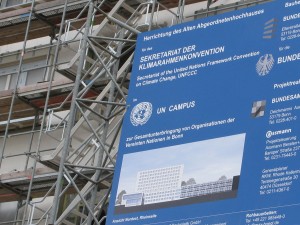
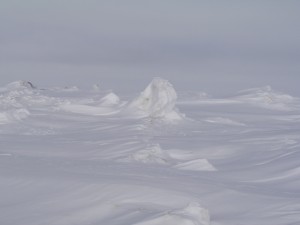

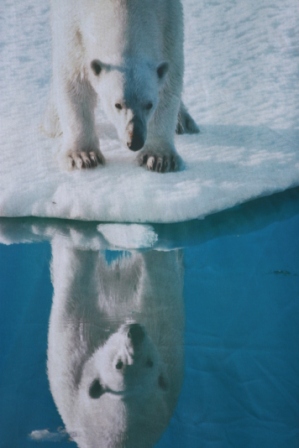
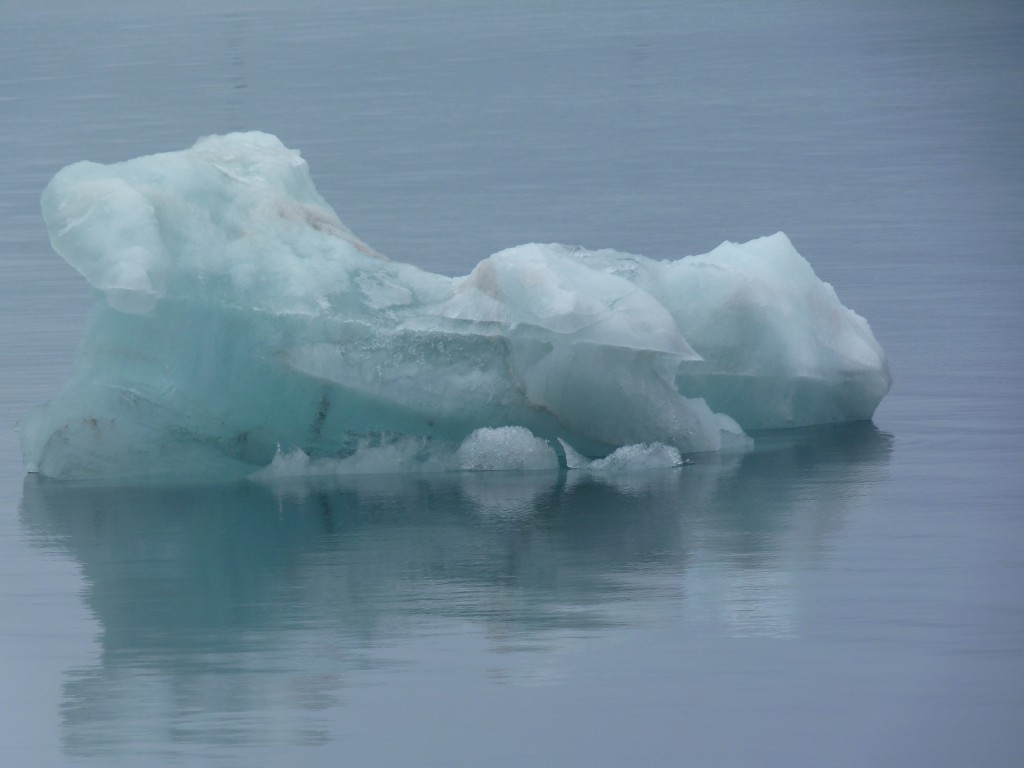

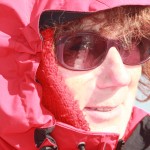
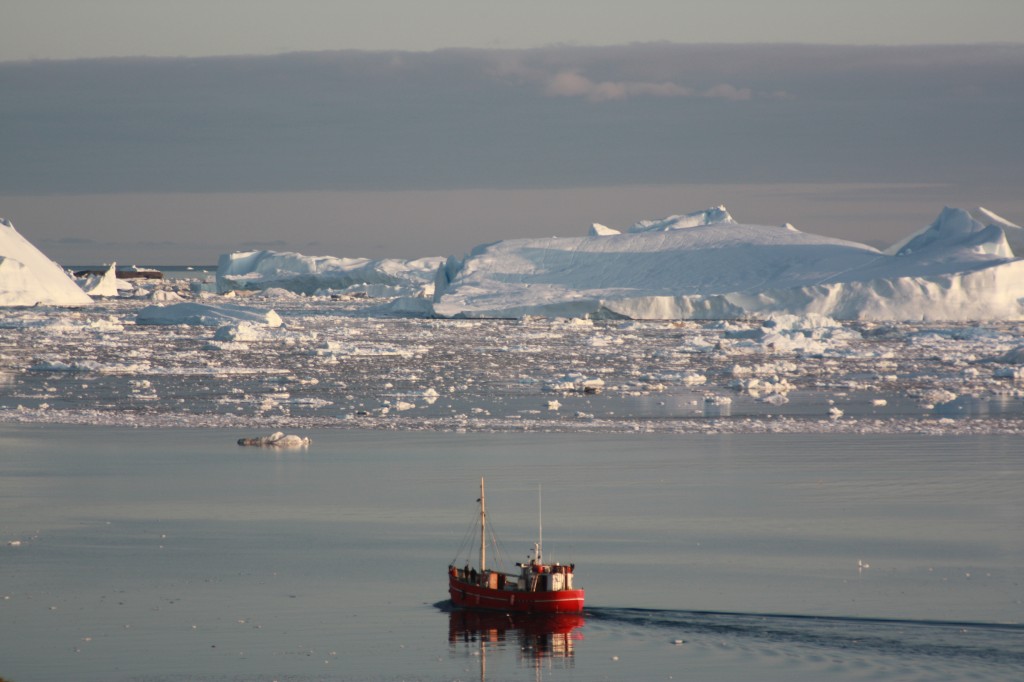

















Feedback